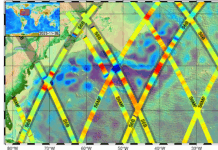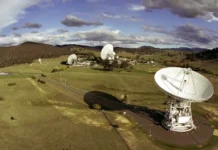In December 2024, a group of five small satellites, known as CubeSats, were successfully deployed into Earth’s orbit from the International Space Station (ISS). Among these innovative satellites was a particularly unique one named LignoSat, developed by the Japanese Aerospace Exploration Agency (JAXA). This satellite stands out because it is constructed using wood, specifically honoki magnolia wood, and its mission is to explore the feasibility and benefits of using wooden materials in the harsh conditions of space. The insights gained from this mission could potentially pave the way for more sustainable and environmentally-friendly alternatives to the conventional materials currently used in satellite construction.
### The Genesis of LignoSat
The journey to creating LignoSat began with a series of preliminary experiments designed to test how wood fares in the space environment. These initial tests, conducted on the ISS, involved exposing three different species of wood to the space atmosphere to determine which type would be most suitable for the satellite. The outcome showed that honoki magnolia wood, known for its durability and resilience, was the best candidate. The final design of LignoSat incorporates 10 cm long panels of this wood, ingeniously assembled using a traditional Japanese wood-joinery technique known for its strength and precision.
### Why Wood in Space?
The concept of using wood in space might seem unconventional, yet it is rooted in both innovation and sustainability. Traditional satellites are manufactured using metals and synthetic materials that are often costly and have significant environmental impacts. Wood, on the other hand, is a renewable resource that could offer a greener alternative. Furthermore, wooden satellites, if successfully deployed and maintained, could potentially reduce the amount of space debris, as wood is more likely to burn up upon re-entering Earth’s atmosphere compared to metal.
### Technical Evaluation of LignoSat
To ensure the feasibility and reliability of using wood in space, LignoSat is equipped with a variety of sensors to closely monitor and evaluate its performance. These sensors are tasked with measuring the strain experienced by the wooden components under the extreme conditions of space. They assess how the wood responds to drastic temperature changes and exposure to space radiation, which are critical factors in determining its viability as a construction material in space.
Moreover, researchers are particularly interested in observing the geomagnetic levels surrounding LignoSat. The satellite’s ability to withstand potential interference from the geomagnetic field is being closely monitored, as this could affect its technological functions and communication capabilities. Understanding whether the geomagnetic field can penetrate the wooden body of LignoSat will provide valuable insights into its practicality and reliability in space missions.
### Potential Impact and Future Prospects
The exploration of wood as a viable material for space technology opens up exciting possibilities for future innovations. Should LignoSat prove successful, it could revolutionize satellite design by offering a cost-effective and sustainable alternative to traditional materials. This shift could significantly impact the satellite industry by reducing production costs and minimizing environmental impacts.
Additionally, the successful deployment and operation of a wooden satellite could inspire further research into other natural materials, broadening the scope of sustainable technology in aerospace applications. Researchers and engineers could explore the use of various types of wood and natural fibers, potentially leading to the development of new composite materials that combine the best qualities of both natural and synthetic components.
### Reactions and Reviews from the Scientific Community
The introduction of LignoSat has generated considerable interest and curiosity within the scientific community and beyond. Many researchers and engineers are eagerly watching to see how this experiment unfolds, as it challenges the traditional norms of satellite construction. The idea of using wood—a material that has been fundamental to human innovation for centuries—in a cutting-edge field like aerospace, is both fascinating and promising.
Some experts have praised JAXA for their forward-thinking approach and commitment to sustainability. The potential of LignoSat to demonstrate the viability of wooden materials in space could encourage other space agencies and private companies to consider more environmentally-friendly alternatives in their designs.
### Conclusion
LignoSat represents a bold and innovative step towards more sustainable space exploration. By investigating the potential of wooden satellites, JAXA is not only pushing the boundaries of technological innovation but also addressing the pressing need for more environmentally-conscious practices in the aerospace industry. As the world continues to grapple with the challenges of climate change and resource depletion, initiatives like LignoSat offer a glimpse into a future where technology and sustainability go hand in hand.
As we await the results of LignoSat’s mission, the scientific community remains hopeful that this pioneering experiment will mark the beginning of a new era in satellite technology—one that harmonizes with nature and prioritizes the health of our planet. If successful, LignoSat could serve as a catalyst for future research and development, inspiring a wave of innovation that propels the aerospace industry towards a more sustainable and responsible future.
For more Information, Refer to this article.


































